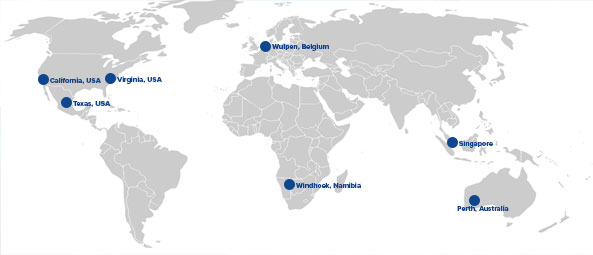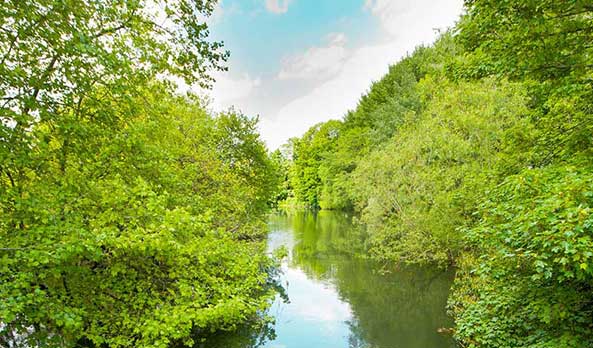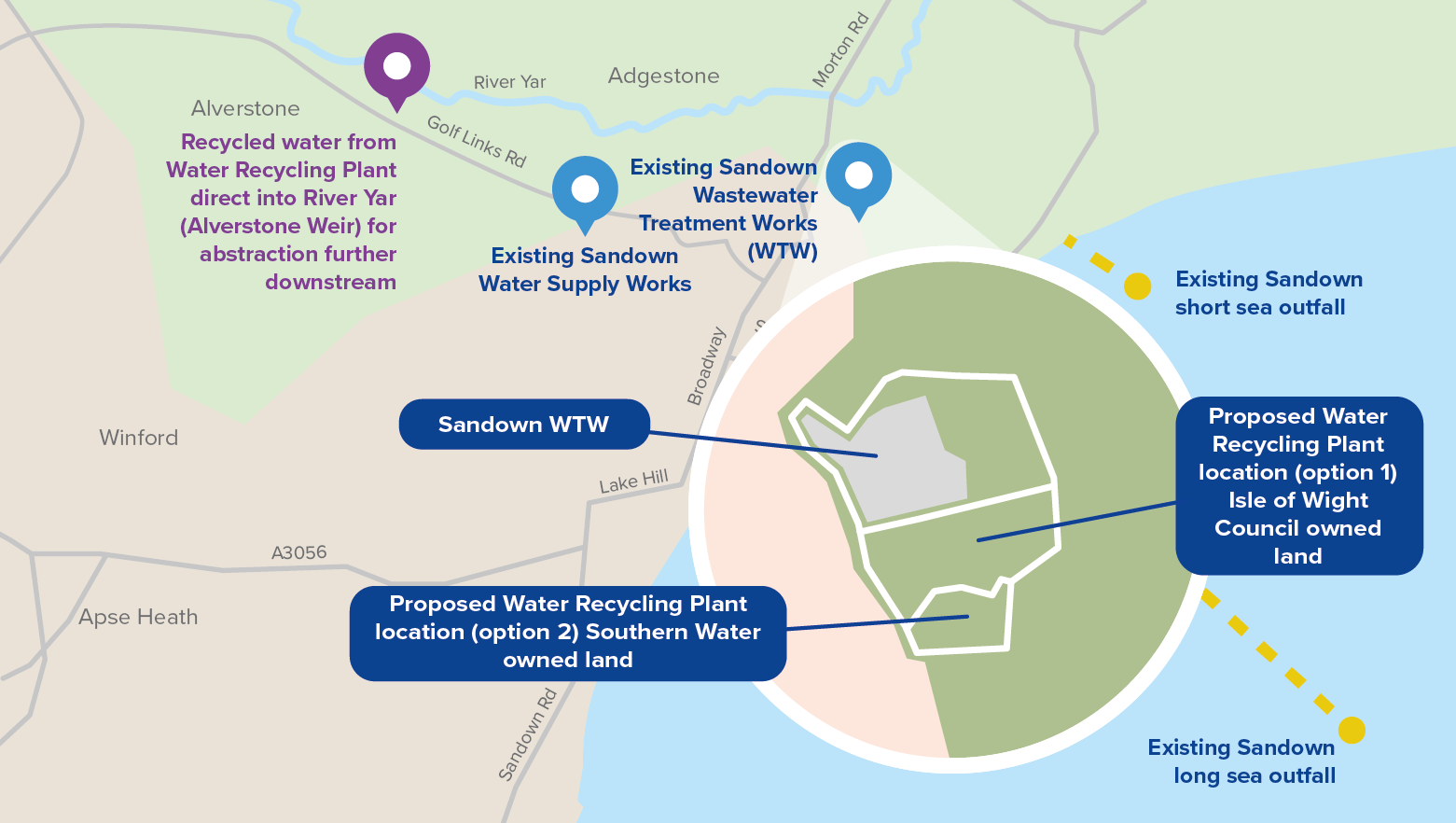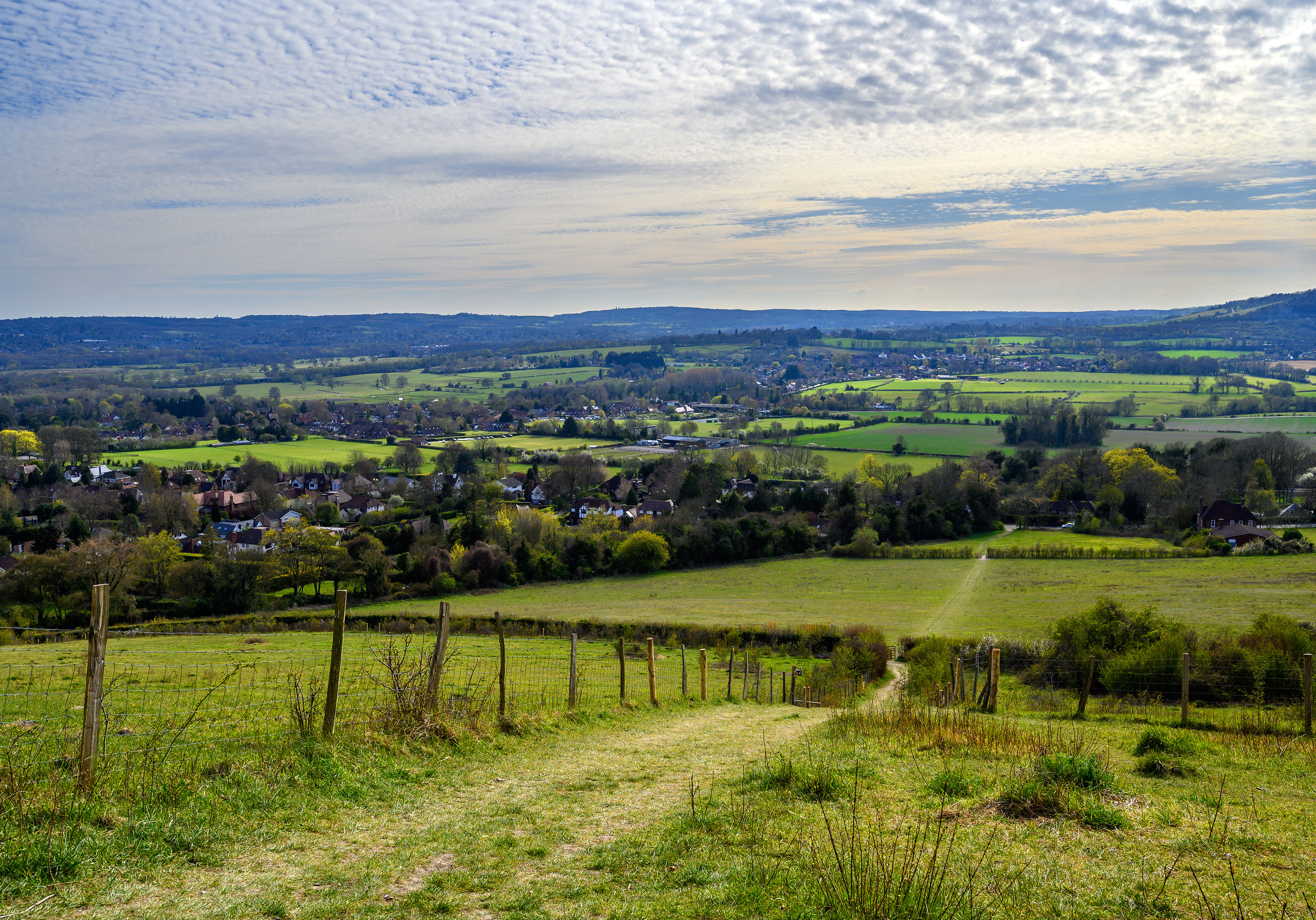Water recycling
We’re proposing water recycling to address future water shortages in our region.
Water recycling is a tried and tested technique that’ll provide a reliable water supply to customers even in times of severe drought and reduce the amount of water we need to take from the environment.
What’s the process?
Water recycling essentially speeds up the natural water cycle.
Currently wastewater, which has been cleaned and treated, is released into the sea. Overtime water from the sea evaporates and falls as rain filling up our water sources like aquifers and rivers. Water is extracted from these sources and treated further by our Water Treatment Works turning it into drinking water.
Water recycling accelerates this process. Some of the treated wastewater will be diverted to a specialised Water Recycling Plant. Here it’ll be treated further before being released into a lake, river or reservoir where it will mix with other sources of water.
Water from the lake, river or reservoir would then be transferred to a Water Supply Works for further treatment to strict Drinking Water Inspectorate standards before it reaches customers’ taps.
It’s a process that’s used around the world for more than 40 years. Take a look at our video which explains the treatment process:
Why do we need water recycling?
The south of England is water stressed. We rely on our natural environment for the water we need but there isn’t an endless supply.
We’ve already agreed to reductions in the amount of water we can take from rivers during a drought and need to find new sources of water to make up the shortfall. Meanwhile, population growth and climate change are continuing to put pressure on the demand for water and the environments ability to provide it.
This combined with the responsibility on us all to protect our environment, means if we do nothing, we’ll face a shortage of water.
To keep taps and rivers flowing, we need to take a fresh look at the water we waste. Water recycling, alongside reducing leakage and improving water efficiency, is an essential next step to ensuring our water supplies are truly sustainable and fit for the future.
What our customers think about water recycling
Water recycling around the world

Recycled water is safe to use as a drinking water source and its use is already widespread in other parts of the world – the above graphic shows the number of global projects that are using a similar approach to Southern Water’s proposals. Further information can be found in:
- The World Health Organisation’s “Potable reuse: guidance for producing safe drinking water”
- Montebello Forebay and Orange County, California, USA, here.
- Windhoek, Namibia
- Perth, Australia
- Singapore
Our wider water recycling plans
We’re proposing four separate water recycling projects across our region and are one of six water companies currently developing water recycling schemes across the UK. Our water recycling projects include:

Havant, Hampshire
Plans include taking more water from the planned Havant Thicket Reservoir to our Otterbourne Water Supply Works and use water recycling technology to supplement the reservoir.

Sandown, Isle of Wight
We’re exploring ways to recycle water which will reduce the reliance on the mainland for its water, ensuring customers’ supplies are maintained in future droughts.

Ford, West Sussex
We’re exploring ways to recycle water and build resilience in Sussex to ensure customers’ supplies are maintained in future droughts.

Aylesford, Kent
We’re exploring ways to recycle water and build resilience in Kent to ensure customers’ supplies are maintained in future droughts.
FAQs
Is water recycling safe?
Yes, water recycling is a safe, established method of water treatment that is already used elsewhere around the world. Water recycling adds further layers of treatment for the already-common practice of pumping highly treated wastewater into rivers where water is abstracted further downstream for supply. Water recycling produces highly treated, purified water that would be pumped to a water supply works for further treatment in order to meet strict water safety standards.
Is treated wastewater the same as stormwater releases?
No – the water recycling proposals are fundamentally different, and separate, to the current system of stormwater releases which are designed to protect homes from flooding.
Stormwater is wastewater that has been heavily diluted by rain and is sometimes released to the environment to reduce the risk of flooding to homes and businesses.
Recycled water is purified water that has gone through a series of advanced treatment techniques so it can be used as a source for drinking water supplies.
What other options have you considered?
We’re cutting down leakage, improving water efficiency and working with neighbouring water companies to share supplies. These improvements will help save water but we need to find new sources to ensure we can take less from the environment.
What are you doing to encourage your customers to use less water?
Our Target 100 is an industry-leading programme that aims to achieve a reduction in customer consumption from an average of 130 litres per person per day, to 110 litres by 2040 and 100 litres by 2050. We’re doing this by encouraging, supporting and incentivising our customers to understand the value of the water they use.
At the same time, we’re investing in new, innovative ways of finding and fixing leaks to keep water in the network. We’re committed to reducing our leakage rate by 15% by 2025, 40% by 2040 and 50% by 2050.
